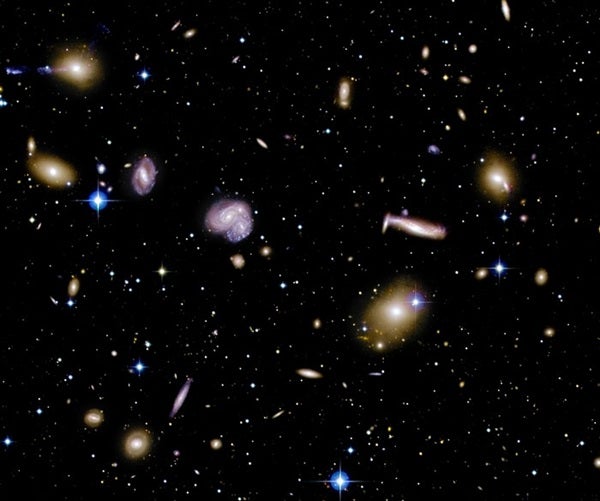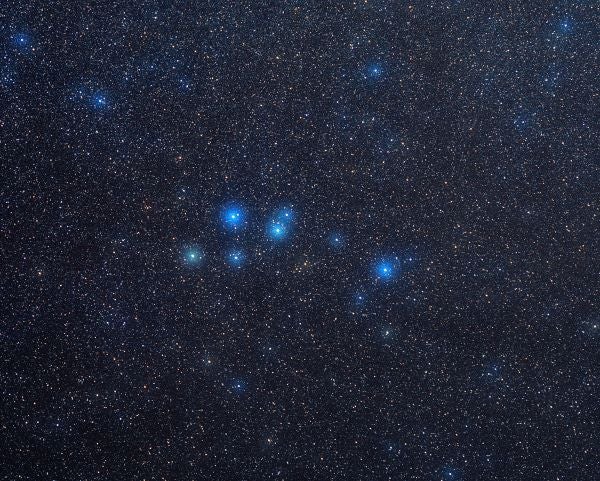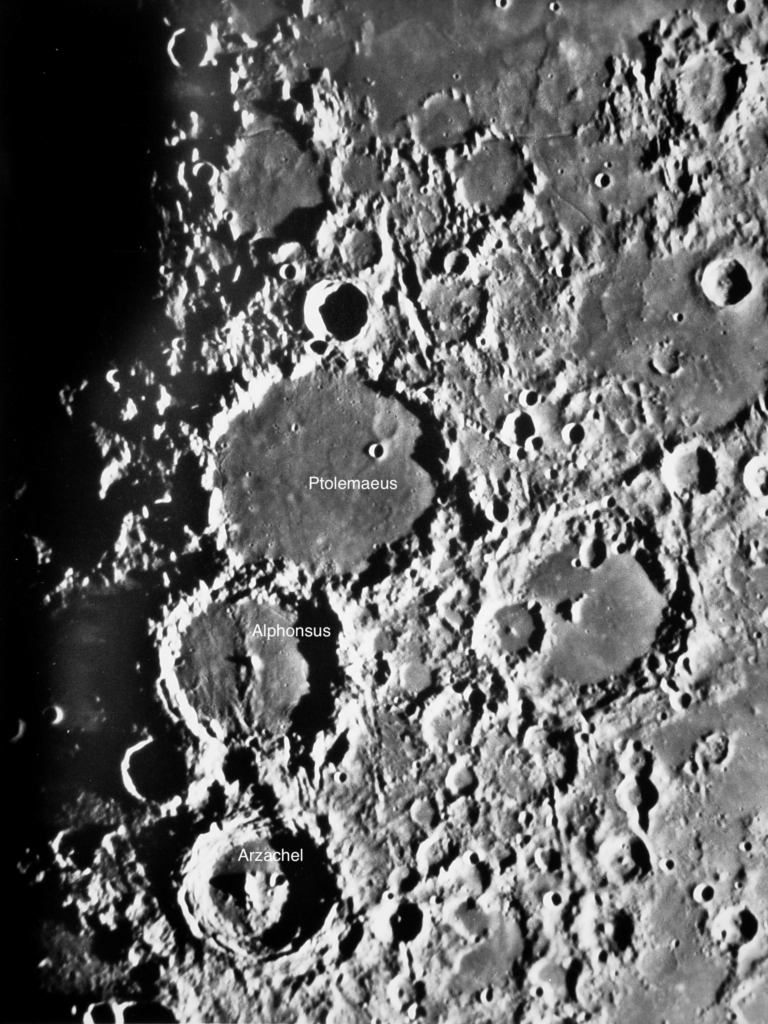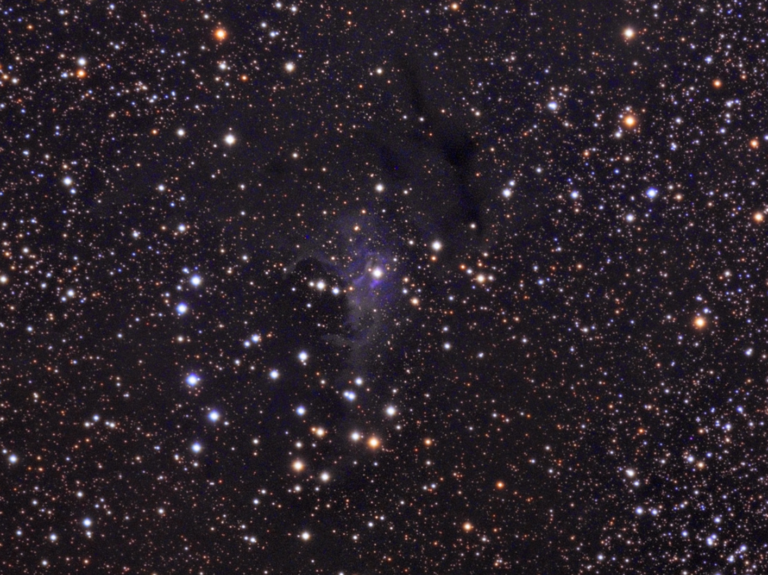
For observers who own or have access to large telescopes and a dark viewing site, one of the most impressive sights in the sky is the Hercules galaxy cluster. Also known as Abell 2151, this group of galaxies takes the term deep sky to a whole new level. It lies at the astounding distance of 500 million light-years.
If your scope has a go-to drive, its database may not contain Abell galaxy clusters. Instead, just target this cluster’s brightest member, elliptical galaxy NGC 6047. Without a go-to, first find magnitude 5.0 Kappa (κ) Herculis. From that star, move 1° northwest and your field of view will land on hundreds of galaxies, most of which glow too faintly to see. But that still leaves several dozen within the range of moderate amateur instruments. Around half of all the members in the Hercules Cluster are spirals. And several of those galaxies are in the process of merging.
Seven members of Abell 2151 are brighter than 14th magnitude, although three just barely crest that level: NGC 6047 (magnitude 13.5), NGC 6061 (13.6), IC 1194A (13.6), NGC 6055 (13.7), IC 1185 (13.9), NGC 6045 (13.9), and NGC 6056 (13.9). Of these, NGC 6045 is the most interesting visually because of the magnitude 15.5 lenticular galaxy PGC 84720 that lies at its eastern tip. The pair gives most the impression of a hockey stick or the letter L.
To successfully observe this galaxy cluster, use at least a 12-inch telescope and magnifications in excess of 250x. High magnifications increase the contrast between extended objects like galaxies and the background sky. Because Abell 2151 spans more than 1°, you’ll need to move your scope around a bit to see the maximum number of galaxies, especially when observing at high power.
Make sure to explore Astronomy’s full list of 101 cosmic objects you must see. New entries will be added each week throughout 2022.









